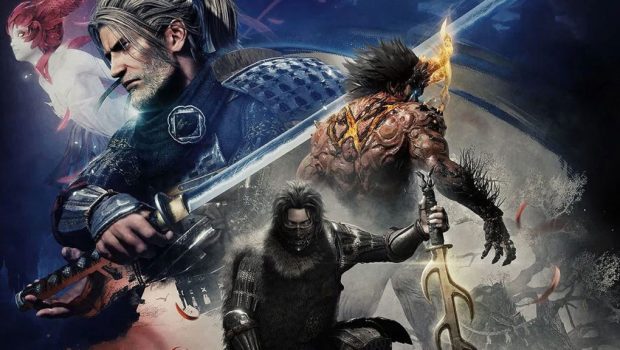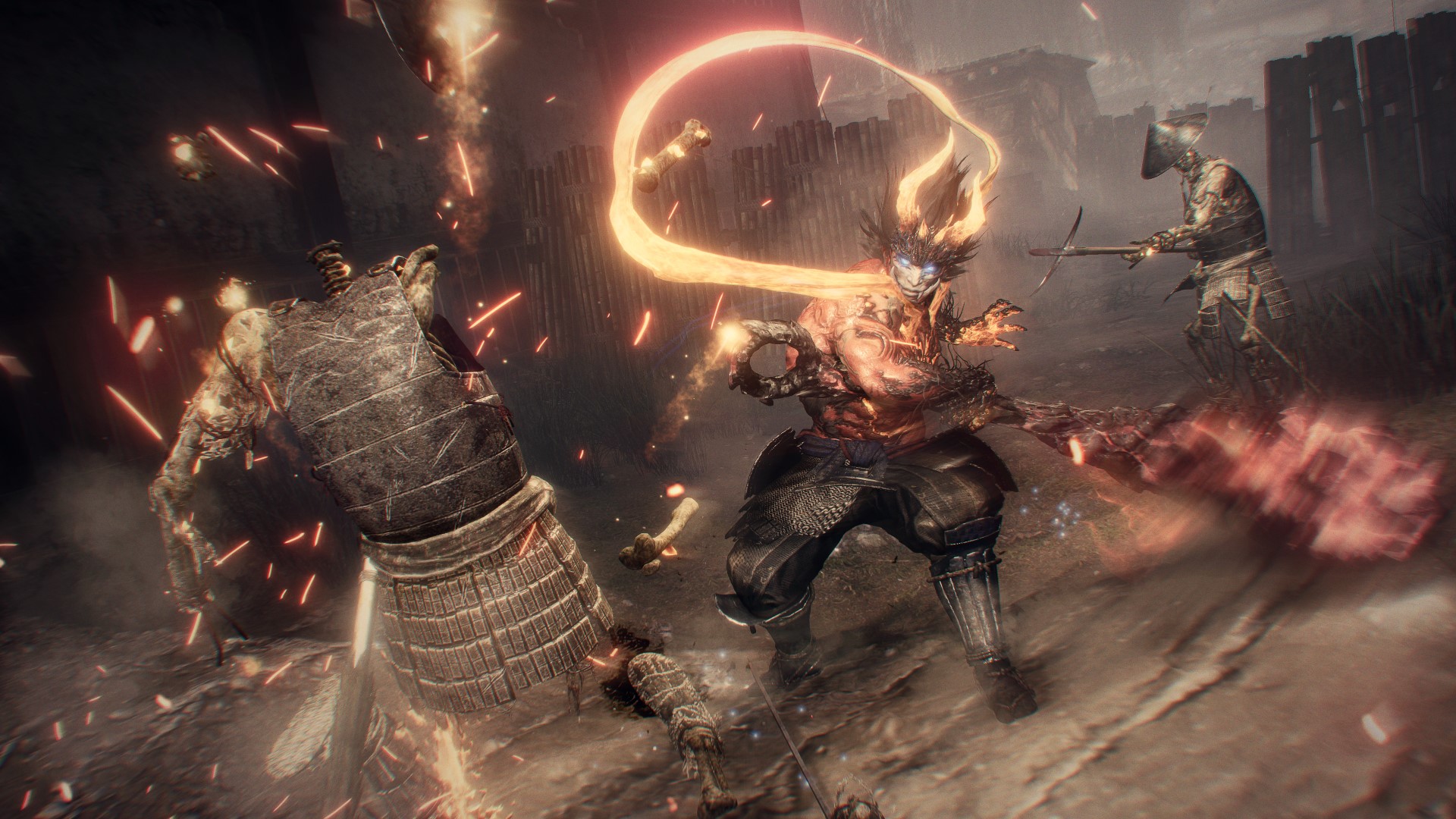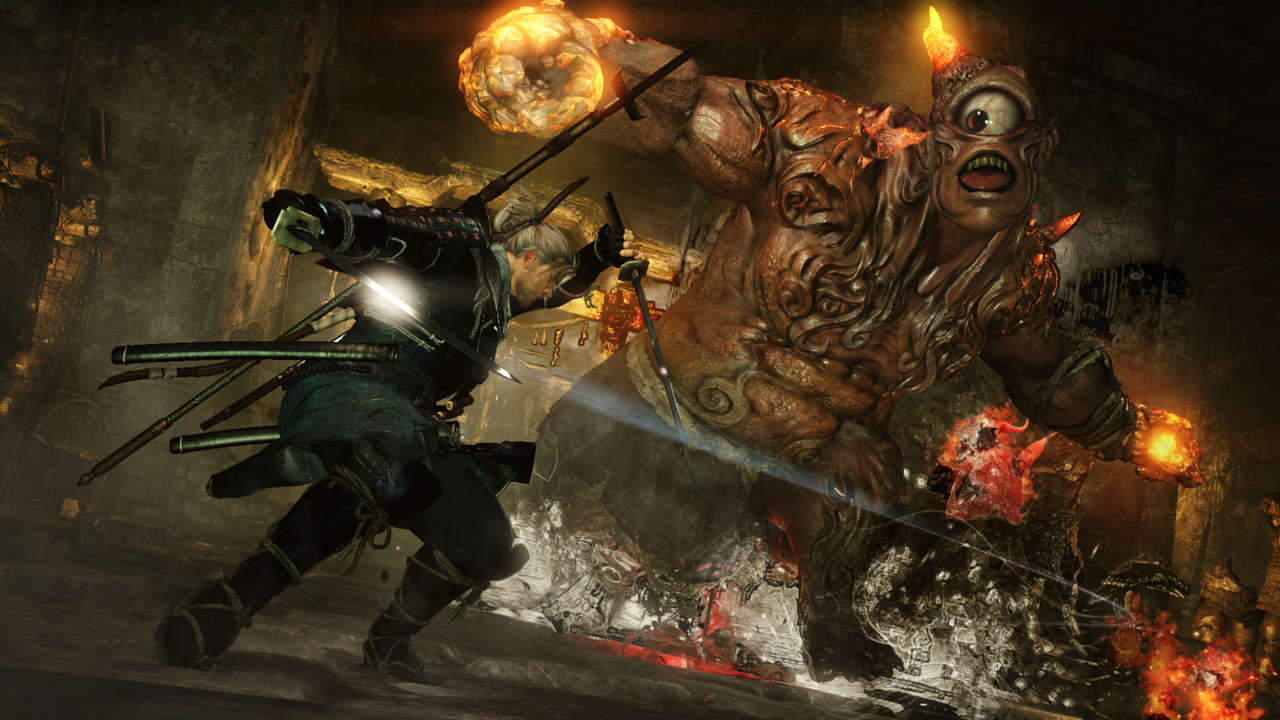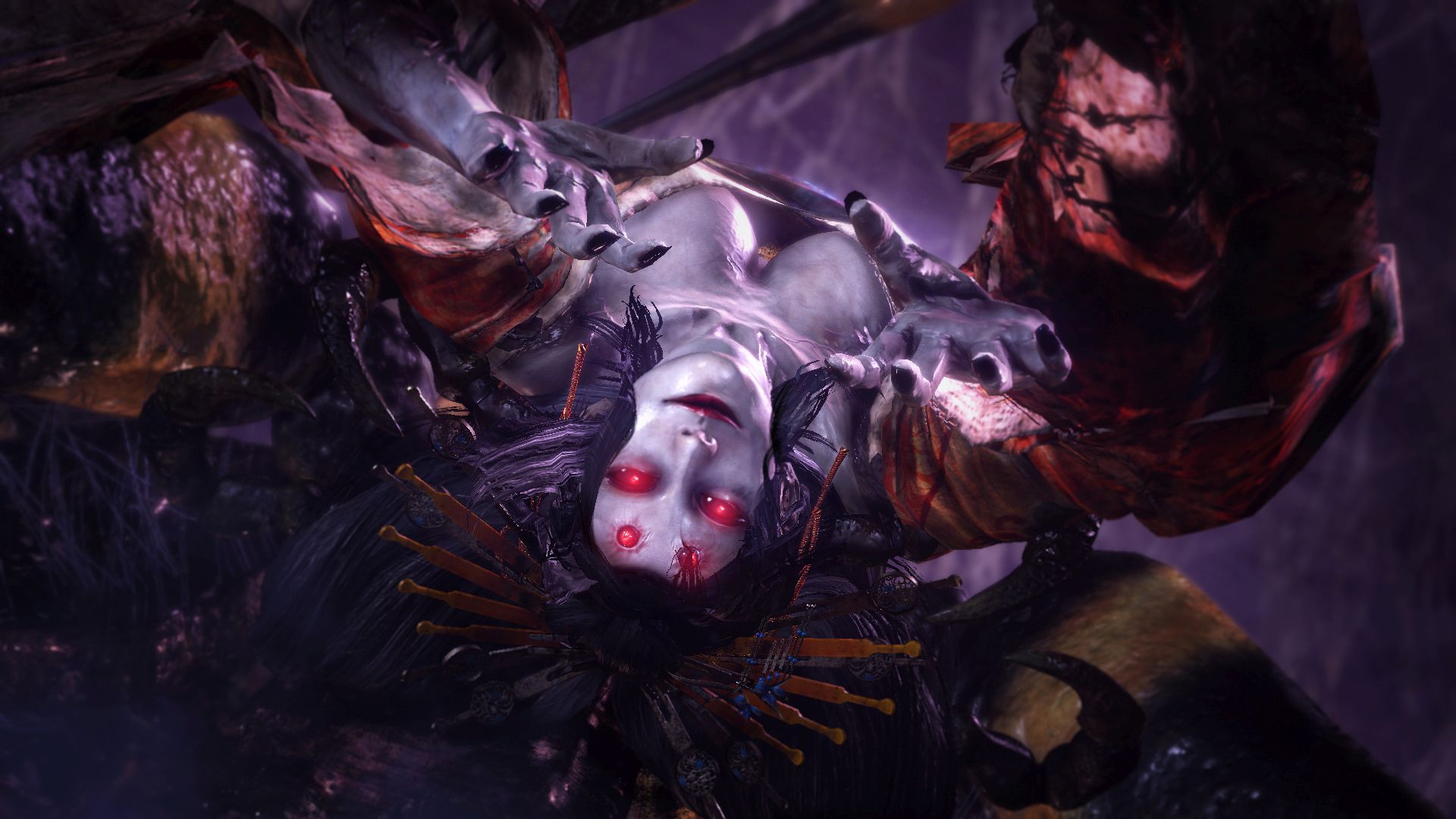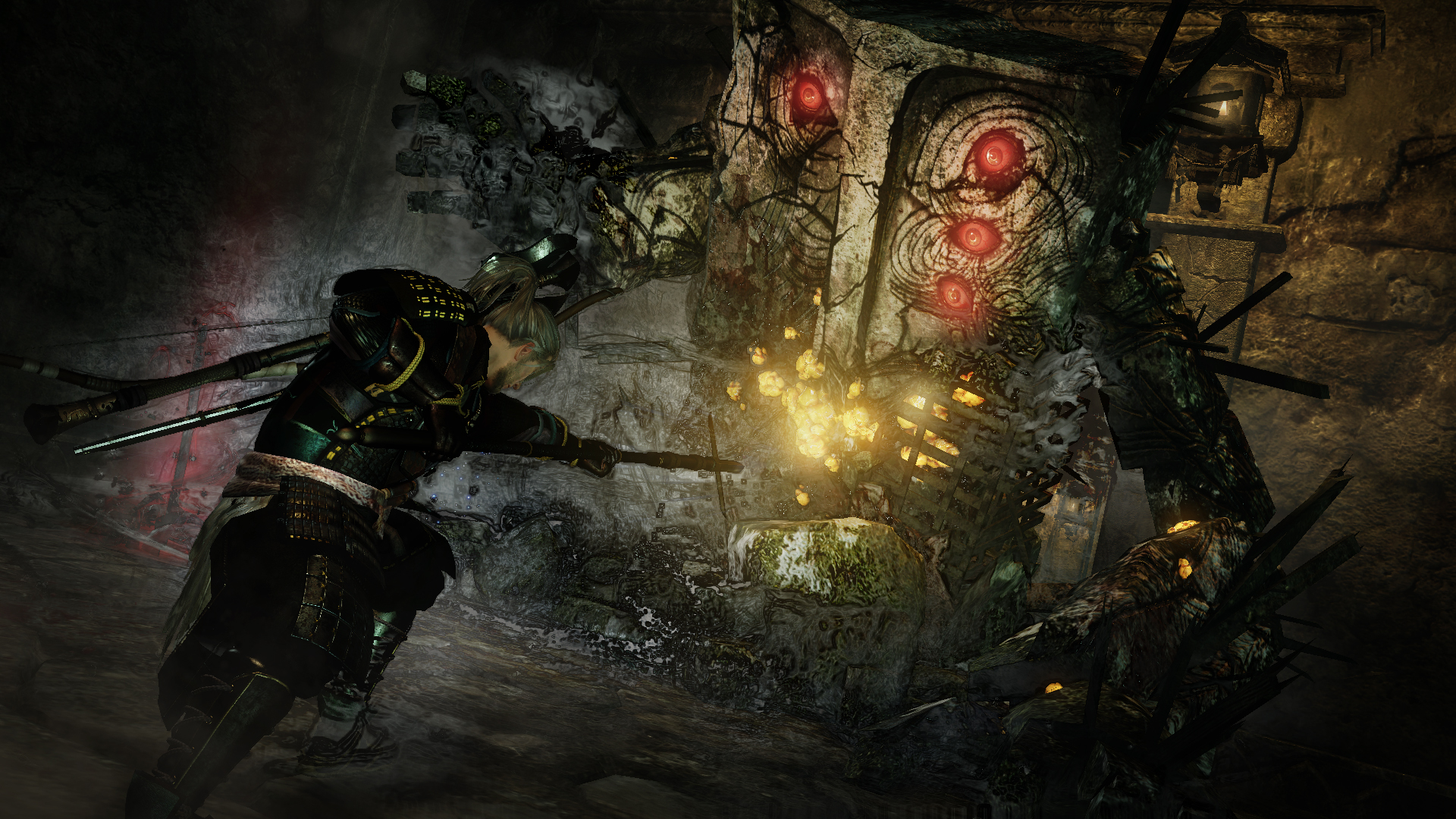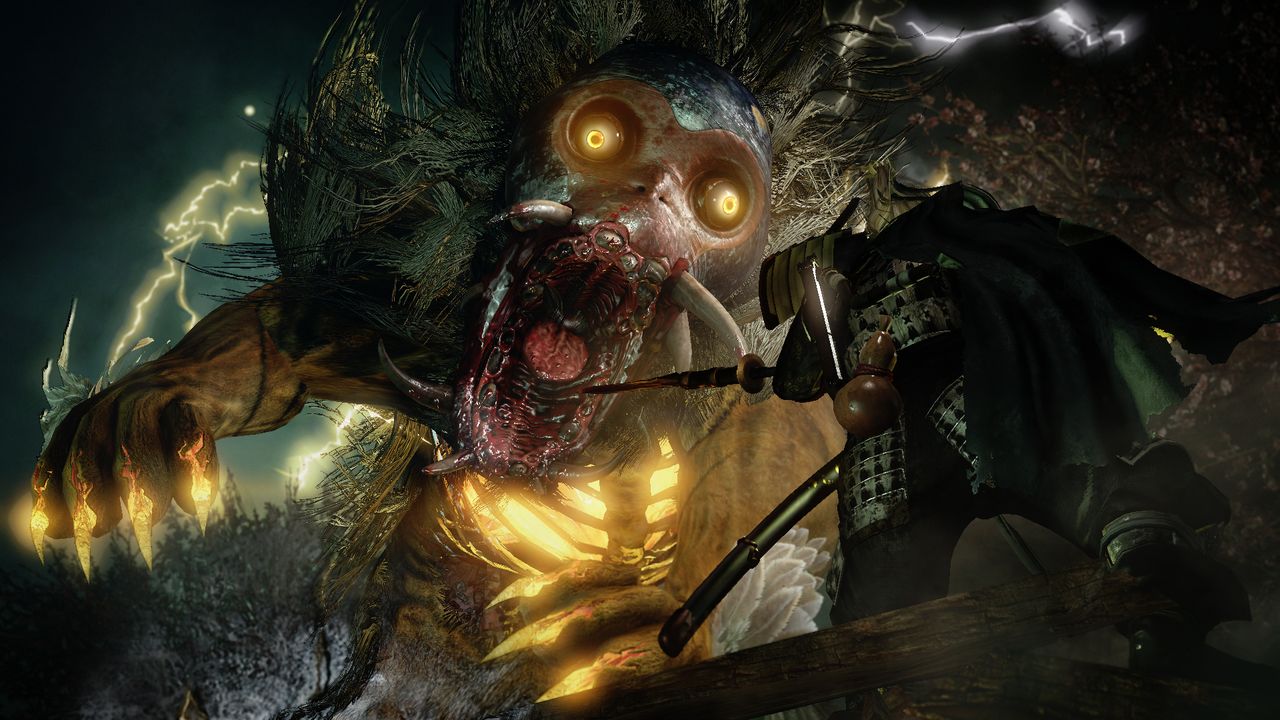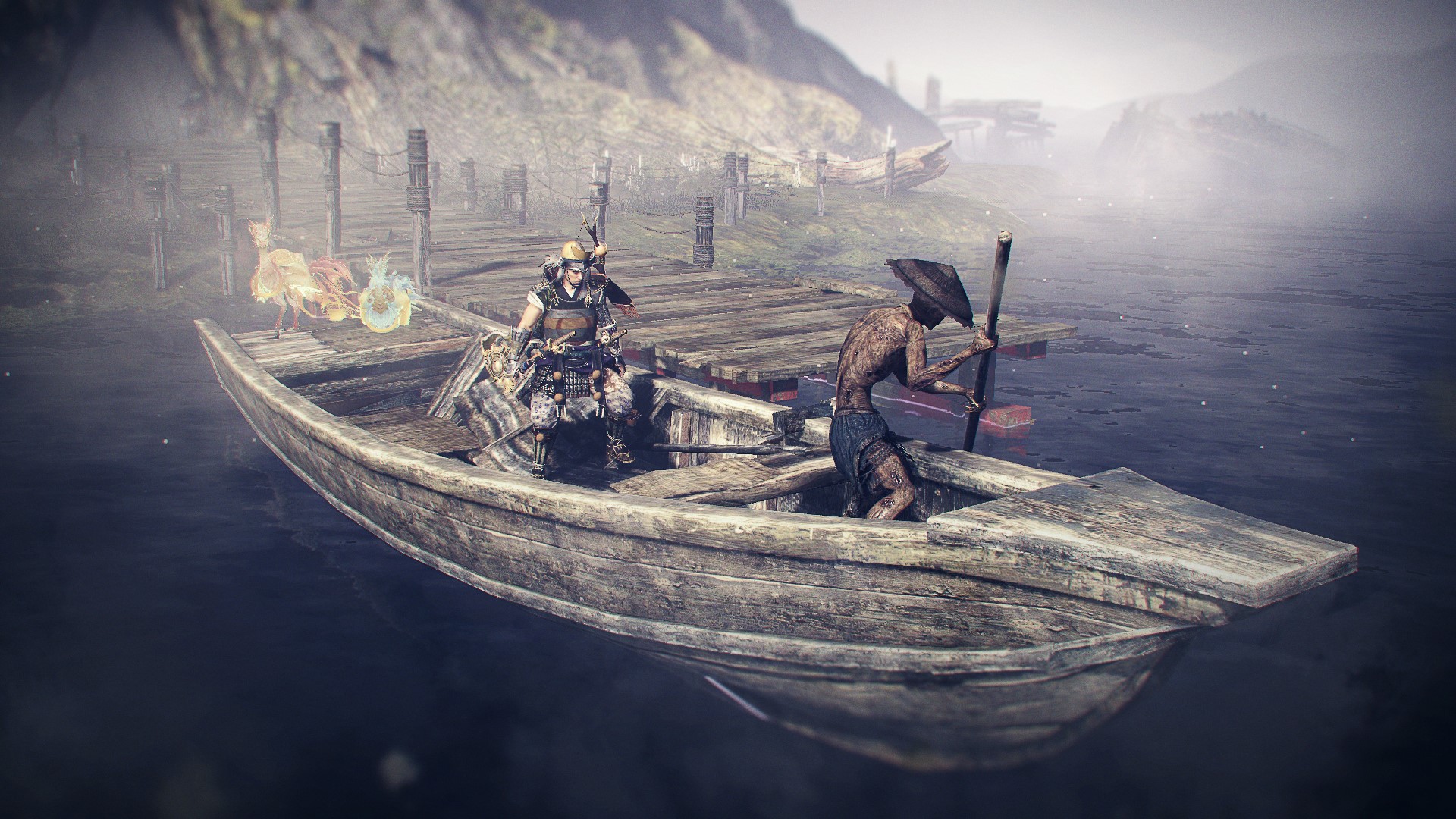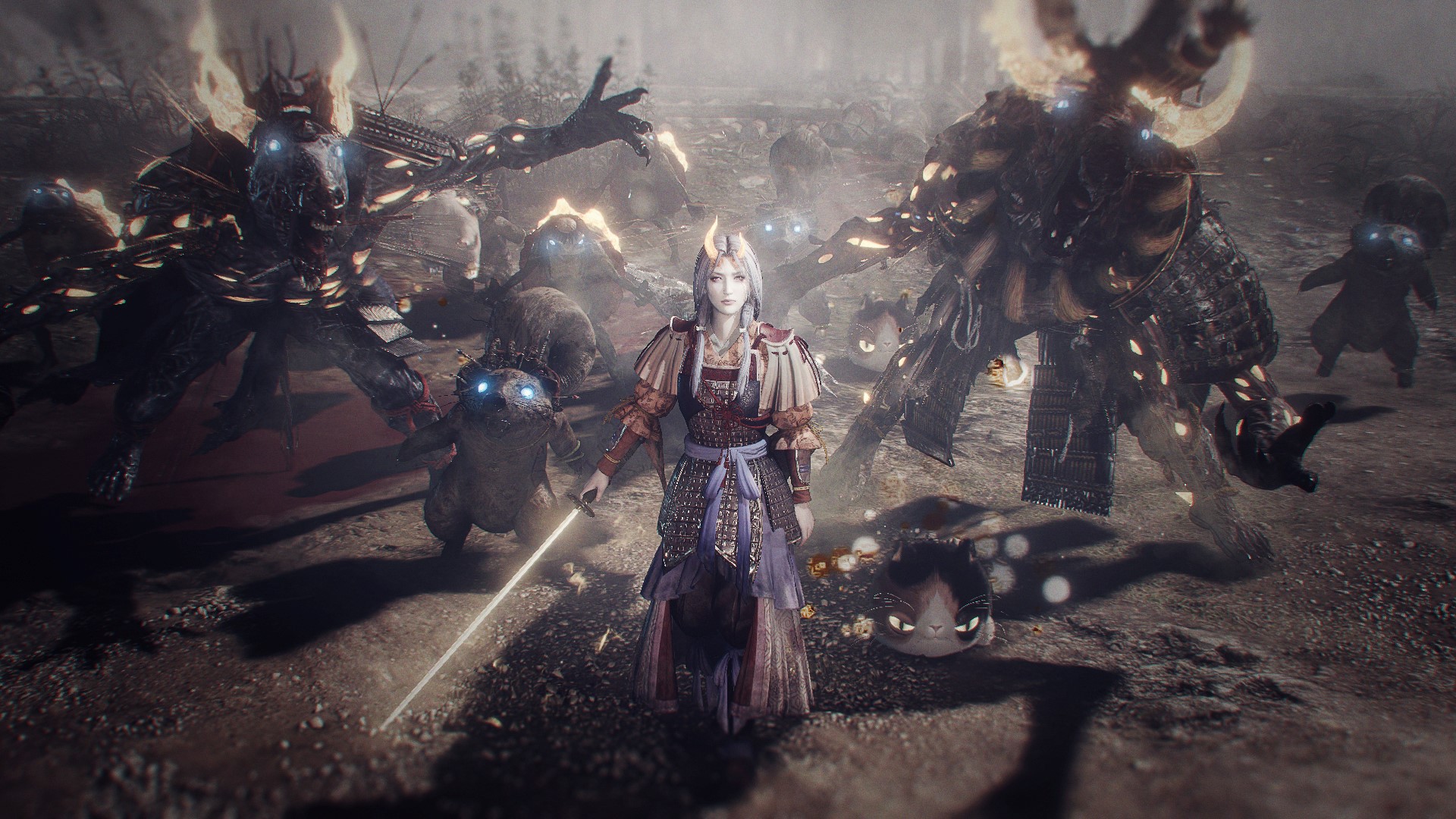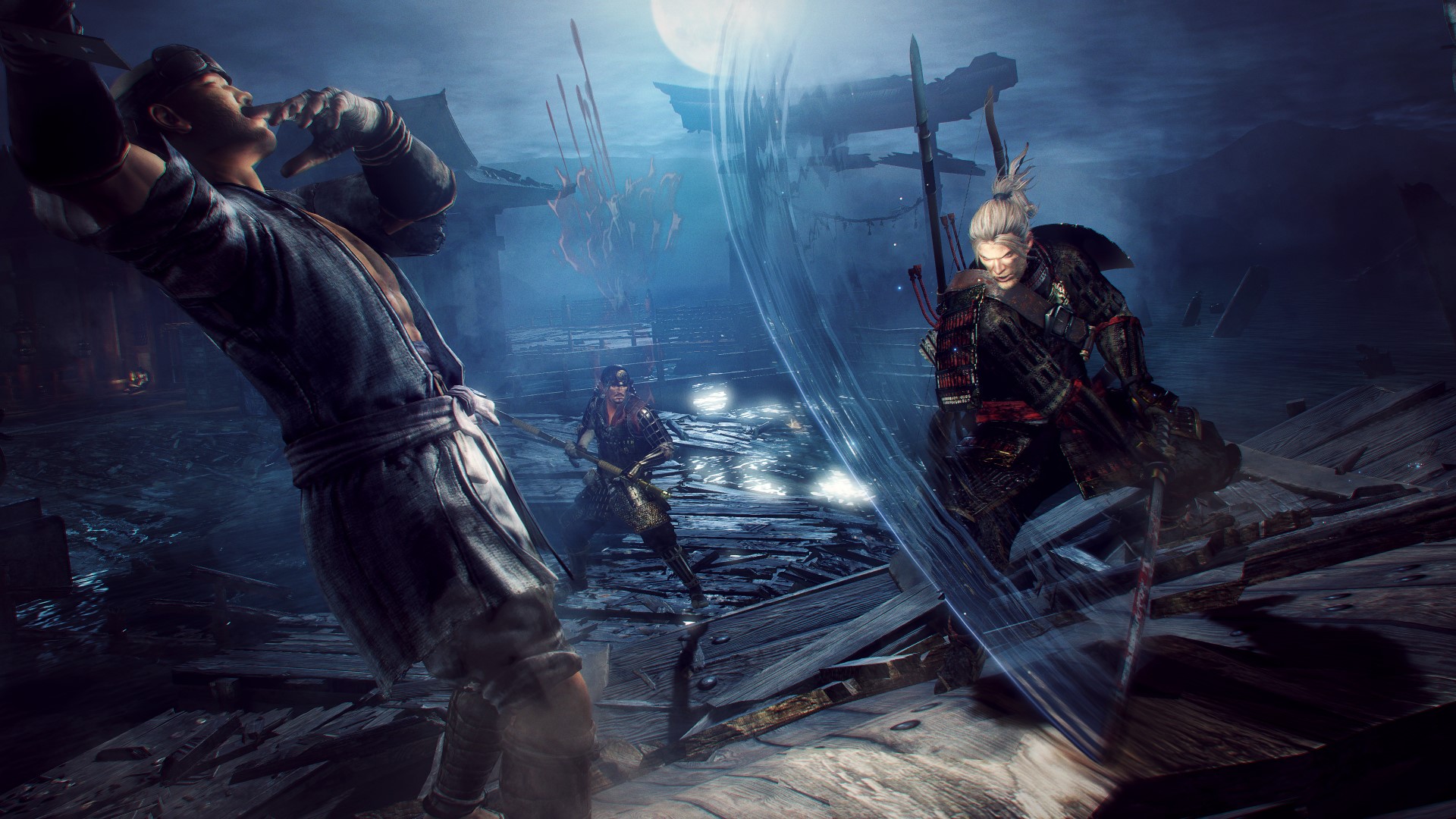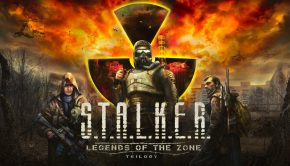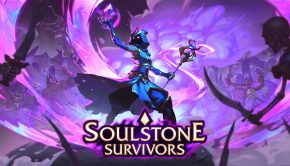The Nioh Collection PS5 Review
Summary: The Nioh Collection PS5 brings together the entire series in lush next-gen graphics
4.4
Ultimate killing
Team Ninja’s Nioh series was a fun experience on the PlayStation 4 as it combined fantasy with historical elements to bring gamers a healthy dose of hack ‘n’ slash to the Japanese RPG genre. Due to its popularity, it spawned a sequel plus multiple DLCs and now it’s time for PlayStation 5 owners to experience this series with next-gen graphics and tweaked gameplay thanks to this enhanced and remastered edition.
Although not as ridiculously difficult as Demon Souls, the Nioh series was and still is a challenging game, particularly those larger than life boss battles but thankfully the mechanics behind the mechanics worked and best of all, it’s transferred equally as well on the PS5. Furthermore the Nioh Collection comes with both games from the series, including all six DLC’s that will give hours upon hours of Demon Souls… err.. Nioh fun!
Gamer vs Nioh… NIOH WINS!
In terms of next-gen features, all the titles in The Nioh Collection support 4K resolution for crystal clear visuals, up to 120 FPS gameplay for silky smooth combat (provided you have a TV or monitor that supports it), ultra-fast load times and the ability to transfer data from the PS4 versions so you can pick up where you left off… especially if you left in rage.
In relation to the DualSense Controller, Team Ninja have performed commendably with this feature as this force fine-tuned dualshock can really be felt through all levels of the gameplay and not just fighting or though magic. Needless to say, it definitely makes the gameplay more immersive and adds another sensory element to your gaming enjoyment, particularly for ranged weaponry.
Nioh Review
Based upon the exploits of real life Samurai William Adams, who left his home of England to serve under Leyasu, the storyline for Nioh takes a liberal but authentic feeling inspiration from actual events and people… Demonic Yokai and Oni notwithstanding.
The opening of the game hits more than a few notes that’ll be familiar to fans of Dark Souls – You awaken in a prison and must fight your way to freedom, slowly being introduced to the basic mechanics of the game, primarily combat and collecting Amrita, which essentially serve as currency like Souls or Blood Echoes do. Periodically you’ll come across Shrines, which allow you to restore your health at the expense of resetting the stage and, after you progress a little, also serve as a place to upgrade your stats, offer up excess loot for Amrita and tailor your spirit animal to your current situation.
The recovery mechanic also operates much like in the Souls games, meaning that if you fall victim to the blade of a foe, you can theoretically regain all of your lost Amrita if you manage to make it back to the point where you died and touch your grave… Of course, pulling off this feat is often harder than it sounds and the risk and reward aspect of the Souls games is perfectly recaptured here.
Although Nioh obviously pays more than a little homage to the Souls games, it also deviates from the established formula in a few interesting ways, many of which help contribute to the gameplay to make Nioh stand out as something wholly unique in of itself despite paradoxically being heavily influenced by other titles
Probably the most major difference, structurally speaking at least, is in how you tackle each area; instead of the entire kingdom being interconnected and fully explorable at all times, Nioh instead confines players to smaller, individual chapters which players can return to of their own volition in order to attempt the additional challenges.
With each area being cordoned off from the rest of the stages, the pacing can feel a little off at times, with environmental transitions happening suddenly after a loading screen rather than dynamically occurring as in the Souls games, but this more concentrated focus on the levels also allows for condensed, goal based gameplay that is almost impossible to achieve in Dark Souls, which is certainly welcomed when you’re short on time and just want to grind out a twilight mission or two.
Once you complete a stage, additional challenges tailored to higher skill levels will open up, as well as the previously mentioned Twilight missions; the challenge levels take place in previously completed stages but often feature a few small differences that change up things just enough to keep level fatigue at bay. Twilight missions act like daily challenges, are only accessible at certain times and offer up a more difficult run through a stage, with the tantalising prospect of obtaining rare items giving players an incentive to tough it out and, forgive the parlance, git gud.
As you’d expect, combat is a massive part of Nioh and anyone familiar with the basic mechanics of Action-Rpgs will soon feel right at home, although I personally took some time to adjust to using the face buttons to attack rather than the triggers. Instead of a stamina bar, in Nioh you have “Ki”, which governs your attack, defensive and movement abilities. Run out of stamina and you’ll be open to attack for a few seconds, more than enough time to cop an axe to the sternum; manage your Ki, however, by carefully employing the “Ki pulse” and you’ll regain a precious amount of expended Ki, allowing you to chain even more attacks together or quickly dodge to safety.
The Ki pulse works similar to the active reload from the Gears of War series; time a press of the R1 button when a blue aura appears around you and you’ll be able to retain the upper hand in almost any combat situation – To use a terrible pun I’m sure every other reviewer has already ran into the ground, Ki truly is key.
The depth of the combat system itself is really quite impressive, with each weapon being able to be employed using one of three stances, which are easily switched between on the fly with a tap of R1 and the corresponding face button. High stance offers up excessive damage at the expense of defence, low stance obviously operates at the other end of the spectrum and middle stance is a nice balance of the two. Choosing the appropriate stance is vitally important, and quickly changing between them depending on the context becomes practically necessary the more regions you unlock.
Unfortunately there are a few hiccups with the combat system, mainly in regards to collision detection; it only happened a few times personally but there were times when a perfectly aligned strike would go through my enemy like they were a ghost, resulting in no damage at the expense of my precious Ki. Again, it only happened a few times but I thought it’d be prudent to mention it.
The plot, honestly, is more than a little confusing despite the generous amount of cutscenes and exposition when compared to From Software’s games. The central conceit sees William pursuing Edward Kelley, a real life figure portrayed as a necromancer here, across the ocean to Japan, becoming embroiled in a simmering conflict between opposing feudal leaders. Throw in some cute guardian spirits, one of which is stolen by Kelley at the beginning of the game, which kicks off events, and you have a coherent, but only just, storyline that, honestly, just ends up taking a back seat to the sublime action on display.
We haven’t even got to talk about the pulse pounding boss battles, which vary from tackling towering behemoths to squaring off one on one against fellow swordsman, or the summoning system, which can only be used to call a player who has previously completed the stage, meaning that there’s no way to play through simultaneously with a friend, or even the extent of the loot system, the blacksmith you unlock a few hours into the game or the options to customise your appearance and weaponry that comes along with it or how guardian spirits can imbue you with a powerful “Living Weapon” attack you can unleash for major damage… I could honestly talk about Nioh for hours but I doubt many would read through a twenty page treatment of just why this game fills me with so much glee.
Final Thoughts of Nioh?
I adored Nioh. Like, straight up marry an inanimate object adore. Is it my favourite Souls type game? Well, no, both Bloodborne and Demons Souls pip it at the post for me. Does it now reside comfortable among my top ten of all time? You betcha. So what kept a game that I’m so enamoured with from surpassing Bloodborne and the like? Well, firstly there’s the enemy variation, or rather, lack of; the boss battles are great and all, but after you get to the fifth region and you’re still facing off against slight reskins of the same demons and human opponents you were taking on across the previous four regions, things can start to get a little stale.
The level design also falters in places, with some levels feeling rushed when compared to the more intricately planned, short-cut and secret laden efforts. My biggest complaint, however, is more due to personal preference – I played through the Alpha and absolutely loved it, even despite the insane weapon degradation system. Besides this minor niggle, however, I have no qualms whatsoever recommending Nioh to fans of the Action-RPG genre; with more content to come later in the year and at least 60 hours coming with the base game, machoistic gamers will find more than enough here to scratch that Souls itch until it bleeds.
And I realise how complacent and lazy it can appear by constantly comparing Nioh to the Souls series but, honestly, it’s practically impossible not to; however, try to take it on its own merit as much as you can and you’ll see that not only does Nioh nicely complement what the Souls games did before it but it takes that foundation and adds its own unique flavour to give gamers something that is both familiar and yet excitingly fresh and original in its own right.
Nioh 2 Review
The biggest difference from the first game is the character creation suite and customisation options. Nioh had some great options for refashioning the looks of your weapons and armour and provided some costumes when you grew bored of playing as William, but its sequel gives far more flexibility in creating the type of character you want to be, with a ton of flexible presets, sliders and accessories to make your samurai (or ninja, or demon killer, or meme character) however you want them to look. You can also change appearance whenever you want, and turn gear into whatever look you prefer, so long as you own it – which is a much appreciated feature. With the ability to also easily share your character with other players, the customisation suite is a much appreciated addition that’s also extensive and doesn’t just feel like a barebones add-on (I’m looking at you, Bloodborne).
I had not played the first game much, so after creating my character and going through a short opening tutorial, where you’re given the opportunity to practice with all the available weapon types and choose your two favourites, Nioh 2 practically drops you straight into the deep-end against a ton of demonic enemies known as yōkai which range in size and lethality, as well as traditional human bandits. Fighting these mobs requires tactical use of your weapon’s three different stances, as well as well-timed damaging combos, finishers and passive skills you can unlock by improving your weapon proficiency in using your weapon long enough. Button-mashing is often too dangerous with limited Ki (stamina) to work with; all it takes is one slip-up to be humbled by a low-level gaki (I’m ashamed to admit). While it can be intimidating, the combat shines if you put the time in to learn your preferred weapon’s combo chains, strike types and quirks; before long I was wrecking foes from afar with my traditional pointy spear and closing the gap with the odd but satisfying swing of my kusarigama.
The skill trees, too, are deliciously in-depth and full of options. You’ve got at least 9 weapon types to train in, with different branches for each weapon stance, along with skill-trees for yōkai abilities and kunai (offensive consumable items like shurikens, bombs, and so on), a mixture of active (manually triggered) and passive skills that offer a large number of ways to fight foes. I opted for the spear as my primary weapon and invested heavily in high and mid stance to be able to poke enemies from further away, sweep foes off their feet for an easy finisher, and damage large mobs with unique crowd control strikes. The many moves you can assign to specific button combinations is generous, and RPG fans will get a lot out of these systems. Throw in a full crafting and re-forging grind via the blacksmith and there’s plenty of experimentation on offer which I found myself losing hours in toying with.
Where Nioh 2 differs from competitors and its predecessor is its yōkai abilities. Because your character is a yōkai spirit, you’re imbued with transformations that let you use demonic powers, which you develop by defeating yōkai throughout the game and assigning their special abilities with their fallen Soul Cores. It’s also handy to perform counters to normally unblockable attacks against both demonic and human enemies. You can even turn into one of three yōkai forms (based on your Guardian Spirit) when your Amrita/yōkai Shift bar is full – with another set of powerful abilities, movesets and weapons that is accompanied by temporary invulnerability – and makes you feel like a proper bad-ass. It’s by no means a ‘press x to win’ mechanic, however; plenty of times I faced a challenging boss, activated a yōkai attack only to be brought back to earth by a particularly aggressive attack.
Like other Souls-like games, a lot of the reward from the fast-paced combat is the gold and experience points (called Amrita) you gain from defeating enemies, looting the environment and successfully completing missions. Only, unlike its contemporaries, Nioh is crazy generous with loot; you’ll be swimming in all manner of common, uncommon, rare and unique weapons and armours, craftables and consumable items just from slicing down foes, let alone completing quests. It can be a little overwhelming at times if you’re not into item management, but I found by offering my spare gear to the Shrine for additional rewards (more Amrita to level up, extra Ochoko Cups to summon friendlies, more ammo) things never felt too cluttered. It does make the acquisition of unique equipment a little less exciting compared to other similar games, but rest assured there’s plenty of variety here no matter what you play. I was a spear-wielding acrobat who wanted to rock heavy armour for protection, but with a few settings, I was able to transform the look of my armour into the ninja aesthetic offered by the Shinobi set. Choice, in Nioh 2, is readily offered – and that’s always a good thing for any RPG.
Thankfully, Nioh 2 isn’t completely impossible for players that don’t possess twitch-like reflexes. You can also get additional help by summoning friendly NPCs from Benevolent Graves, which are actually the fallen avatars of other players online controlled by AI. You can also summon real players and friends via the summon options when visiting shrines, which are like checkpoints (or bonfires from Dark Souls) to level up, buy, sell and gear-up for the next fight. Up to two friends can play through the mission with you until the area’s boss is defeated, after which they return to their own world. Co-op was smooth during my playthrough, but as the review period was mostly devoid of an active online population, I wasn’t quite able to enjoy it to its fullest potential.
It’s just a shame that with such an addictive combat-heavy gameplay loop, the story doesn’t quite reach any real heights or leverage the setting to its fullest. Set in 1555 as a prequel to the first Nioh, Japan is far from unified, bandits ravage multiple settlements, and demonic yōkai wreak havoc against the human populace. Your custom created character is the hellspawn of a human and yōkai with your ability to transform back and forth, though a battle with a particularly nasty yōkai makes them go berserk until they’re calmed by a wandering Spirit Stone settler named Tokichiro. From there, you set off to unify Japan by clearing out the demons and bandits, collect a ridiculous amount of loot, and kill yōkai bosses while enjoying bad-ass cutscenes. For me, most of the lore was in the flavour text for each mission and the dialogue from long-killed spirits; the main story remained fairly disjointed and confusing and overall not as compelling as its most direct comparison in the space, Sekiro.
Nioh 2 is also a bit different to its closest comparisons like Dark Souls in that its level progression is organised under a mission structure (with varying difficulty) and presented on an over-world map, with several main story quests and side-quests to complete with various rewards and loot on offer upon successful completion. I’m generally more of a fan of interconnected level design, and I found despite improvements from the first game, the enclosed levels of the sequel are a little less enthralling to explore. There’s plenty of alternative routes and hidden secrets (neat little Hot Springs hidden behind demonic walls and cute Kodama creatures to guide back to shrines for bonus materials) to spice things up, but the more self-contained stage design will be a hit or miss depending on your personal preferences. There’s no doubt the 16th century feudal Japan setting of small towns, demon-infested caverns and night-time raids look far prettier visually than its predecessor, however. One thing that has been increased in diversity is the enemy times, with plenty of different human foes (traditional bandits, gunners, shinobi ninjas, barbarian hatchet-wielding masked men) and demons (freaky little gaki, winged monstrosities, towering brutes, and more) to fight compared to the first title.
Final Thoughts of Nioh 2?
Nioh 2 is an fast, frantic and fluid action-RPG experience that will appeal to fans of Code Vein, Dark Souls and Sekiro for its intricate combat and role-playing systems, extensive character customisation and striking historic fantasy Japanese setting. While the storytelling for the main narrative mostly falls flat and is confusing to follow, the rest of the package more than holds up against its predecessor. The game presents a great challenge for those willing to put in the time to master its numerous playstyles it caters, so it might not be a great fit for those seeking a more casual adventure.
The Final Verdict
While not a new game, The Nioh Collection provides excellent value for money and literally hundreds of hours of gameplay. If you like a challenging RPG in the same vein of Demon Souls, then The Nioh Collection is a must play experience that works a treat on the PlayStation 5, including its next-gen use of Dualsense.


